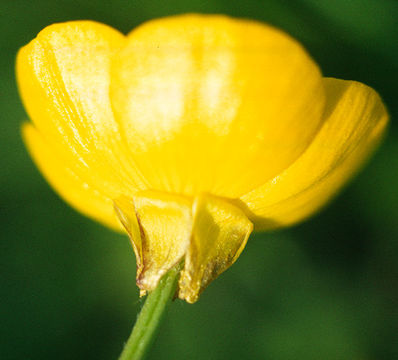

Members of the genus Oenothera support the following specialized bees: Melissodes (Apomelissodes) fimbriatusand Lasioglossum (Sphecodogastra) oenotherae. Wildlife Value: Flowers are fertilized by night-flying moths which are attracted by the mild lemon flower fragrance and by bees in the early morning before closure. Plants die after setting seed, but will naturalize in the landscape. Fruits are capsules (narrow seed pods to 1 1/2” long) which split open when ripe to release numerous seeds (to 100 seeds per capsule). It is highly drought tolerant. Flowers open at dusk and close again in the morning when hit by sun, hence the common name of evening primrose. This plant naturalizes easily and works well planted along boarders or makes an excellent addition to a wildflower, cottage, or herb garden. It commonly grows in fields, prairies, glades, thickets, waste ground, disturbed sites, and along roadsides and railroad right-of-ways. Climate data used in creation of plant range maps is from PRISM Climate Group, Oregon State University, using 30 year (1981-2010) annual "normals" at an 800 meter spatial resolution.Phonetic Spelling ee-no-THEE-ruh by-EN-iss DescriptionĪn upright biennial in the Onagraceae family.
Buttercup plant facts manual#
Other general sources of information include Calflora, CNPS Manual of Vegetation Online, Jepson Flora Project, Las Pilitas, Theodore Payne, Tree of Life, The Xerces Society, and information provided by CNPS volunteer editors, with special thanks to Don Rideout. Sources of plant photos include CalPhotos, Wikimedia Commons, and independent plant photographers who have agreed to share their images with Calscape. Propogation from seed information provided by the Santa Barbara Botanical Garden from "Seed Propagation of Native California Plants" by Dara E. Plant observation data provided by the participants of the California Consortia of Herbaria, Sunset information provided by Jepson Flora Project. All text shown in the "About" section of these pages is available under the Creative Commons Attribution-ShareAlike License. Often riparian or semi-riparian in the drier parts of its range. Don't miss this easy to grow and quite appealing native.

Use in porridge or grind and add to baked goods. Buttercups are not only worthy cut flowers but also a good source of nutrition. Nursery plants may occasionally be available.įor the garden, plant this buttercup in front of the border and in meadows with native annuals and bulbs, blue-eyed grass, shooting stars, woolly blue-curls, and other natives that require little, if any, supplemental summer irrigation. Propagate easily by seed from seed companies and local exchanges. New seedlings readily volunteer in late winter to spring. By mid-summer the flowers have shed seed, and the plant is dormant. Var cuneatus is found primarily on the north-central coast and blooms from short stems, giving this variety the look of a low ground cover. There are two recognized Varieties: Var californicus is widespread and the flowers rise above the basal leaves on 1 ft to 2ft branching stems.

Their native habitat extends into Baja California, Oregon, and some Pacific coast islands. The California buttercup ( Ranunculus californicus), a perennial herb of the Ranunculaceae family, brightens much of California (except the deserts) with 3/4 inch, remarkably glossy, deep yellow flowers, each with 9 to 17 petals. About California Buttercup (Ranunculus californicus) 25 Nurseries Carry This Plant



 0 kommentar(er)
0 kommentar(er)
